History/driving impressions originally published in Special Interest Autos, June 1997; republished by the author
Compare the front clip of any production Opel GT with a ‘68 Chevrolet Corvette and you will understand why Car and Driver called the German sports car a “teeny-bopper Corvette.” The same blade bumper runs across the front edge of the car, with vertical overriders extending downward. The radiator opening has the same wide-U shape, though not, unlike the ‘Vette, framed in chrome. The hood line has the same general contour, but the fenders are dead ringers: the same angles, the same crisp peak.
There are differences, of course. The Opel has “nostrils” and an offset “power bulge,” and its hidden headlamps have oval rather than rectangular cutouts. From the A-pillar back the GT shares only severe body wrap-under and general Coke-bottle shape with the Corvette. Aft of the A-pillar, the GT replaces the knife-edge shapes of the ‘Vette with more rounded and voluptuous lines. The greenhouse is almost bubble shaped compared to the more squared off ‘Vette that with its tunnel back rear window. The Opel’s roofline flows into a fastback with the obligatory duck-tail spoiler. Instead of the Corvette’s creased rear fenders, the Opel has, well, hips.
The rear two-thirds of the production Opel GT conformed fairly closely to Opel’s “Experimental GT” that wowed ‘em at the 1965 Frankfurt Auto Show, but the nose of the earlier car was smoother, without pronounced fender bulges or prominent bumper, and the radiator opening was a simple oval opening in the bodywork.
Interestingly enough, the Experimental GT was completed under the direction of American Claire MacKitchan. MacKitchan was no stranger to Corvettes. He had helped refine the original 1953 Corvette and had overseen the body design of the Corvette SS in 1957. In 1962 he was transferred to head up the styling department at GM’s German subsidiary. It‘s said that MacKitchan found styling rather neglected at Opel, with a “small but effective” crew occupying cramped and under-equipped quarters – and reporting through the chief of engineering. It’s no surprise that Opels were uninspired and rather dumpy.
With MacKitchan‘s Corvette background, GM doubtlessly expected him to breathe some life into Opel’s product line, so he was able to wrangle a new building with the latest of tools and four times the staff. A new Advanced Design group, under Erhard Schnell, was established and a secret two-seat sports car design initiated. So secret was the project that when GM chairman Frederic Donner visited the site in 1963 Opel’s managing director hadn’t seen the plaster model of the car until an hour and a half before Donner saw – and liked – it.
Opel management was nothing if not traditionalist, however, and had to be pushed to develop the car. Of two proposals for development, one a true advanced concept car and the other based on the existing Kadett sedan chassis, the latter was favored by Opel head Hans Mersheimer while other executives saw no need for a limited production sports car that would sell no more than several thousand units per year. MacKitchan and Bob Lutz, then high up in Opel’s marketing department, managed an end run by showing the developed prototype to Semon “Bunky” Knudsen, then VP of GM’s overseas operations, suggesting that it be revealed at the 1965 Frankfurt auto show. Knudsen, a performance car enthusiast, agreed. Many Opel execs were caught out and flustered by the car’s debut, but the cat was out of the bag that stodgy old Opel had an exciting project. Public response was overwhelmingly positive.
Opel issued a rather transparent disclaimer that the GT was developed as a “high-speed test chassis to fully utilize our new test track at Dudenhofen” and a “mobile testbed for suspension work.” The sexy GT body was merely an added bonus. In truth there was a massive struggle within Opel over the GT, not only whether to produce it but how. Styling’s original plan was to relocate the engine almost a foot further back in the chassis, but the fiscally timid proposed using the Kadett chassis, including the engine position, intact. It would have required a total front end restyling, but styling staked its case on engineering, proposing a driving test of prototypes with the two engine locations. Lutz admitted that either way the GT probably would have sold as well, but while the standard location felt like an “Opel with a special body on it,” the setback engine behaved “like a real sports car: nimble, agile, responsive, perfectly balanced.”
“A real sports car” or not, someone would have to build it, and it certainly wouldn’t be Opel, who was working at capacity. Every GT produced would mean one less of something else. The answer, of course, was to have the German GT built elsewhere: France. Although Karmann had been considered, the contract went to Brissonneau & Lotz, located some 35 miles from Paris and who also made fiberglass bodies for Matra. Chausson was subcontracted to supply additional body shells when demand outstripped B&L’s capacity, although all bodies were painted and trimmed by the prime contractor. The partially completed GTs were then shipped to Opel’s factory in Bochum for completion.
It has been pointed out that all design was done at Opel, although some production ideas came from the French firms. Chausson, especially, came up with building the bodies as nose and tail sections, mounted on the mid- and underbody and welded up around the middle. It was cheaper but later would make accident repair more difficult and expensive.
The final product, as noted earlier, differed from the Frankfurt show car. In addition to the modifications to the nose, the roof was 2.75 inches higher for additional headroom and the interior was wider as well. The car had been extensively tested in Stuttgart’s wind tunnel and in fact had a coefficient of drag of 0.36, GM’s best for 1969 and years after. But practical testing resulted in the last minute addition of ventilation slots and louvers – which actually add interest to an otherwise bland hood – and the elimination of Corvette-like vendor side vents. Helping achieve that record breaking Cd was flush mounting of the glass and gutterless “aircraft-style” door cuts in the roofline.
Like the Corvette and the Experimental GT, the production Opel GT had pop-up headlamps. Well, not exactly pop-up. The retractable lamps rotated on a longitudinal axis, with circular seams when the lamps were down and frog-eye bulges when raised. Aesthetically they were perhaps the best hidden headlamps since Cord’s crank-out lights. They were slightly less inconvenient, however, actuated by cables attached to a lever on the console.
Another peculiar feature was the lack of a trunk lid or hatch. Luggage room for two – traveling light – was accessible only by folding the high-back bucket seats forward. That was awkward enough, but spare and tools, covered by a snap-down vinyl screen, were on a shelf aft of the cargo compartment. Oh, your aching back.
Engine access for the GT was via a front-hinged hatch that had gained an offset “power bulge.” Underneath was either the Kadett Rallye coupe’s pushrod 1.1-liter (1077cc) four, rated at a rousing 67 hp – SAE gross – or the 1.9-liter (1897cc) cam-in-head four-cylinder engine. At least the base engine was the dual carb 1.1, with two single throat carburetors, instead of the Kadett sedan’s 60-bhp single carburetor engine. The 1.9 was late of the Kadett Rallye 1.9 and earlier from the Opel Rekord. It was an unusual engine in that its camshaft was situated over the combustion chamber and operated intake and exhaust valves by rocker arms. Lash was adjusted by the rocker shafts and the camshaft turned by a duplex chain. The valves, in line along the right side of the engine, were canted at 24 degrees and opened into wedge-shaped combustion chambers. It was available in a 1.5-liter version, standard in the Kadett but the GT had only the 1.9.
Power output for the 1.9 was 102 bhp at 5400 rpm, with 115 foot-pounds of torque at 3100 rpm, an honest day’s work for an engine of this size back then. Carburation was by a single two-barrel Solex carburetor that would prove to be a headache for Opel owners. It was frequently pitched away and the ubiquitous Holly/Weber two-barrel put in its stead. Road & Track complained about the engine noise from the 1.9 in the Kadett, but was “pleasantly surprised” by the GT 1.9, which still had fan noise but not at the same volume. A final drive ratio of 3.44:1, taller than many four-cylinder imports, allowed a 70-mph cruise at a relatively serene 3560 rpm.
The GT was available from the beginning with a choice of four-speed manual or three-speed automatic, shifters either way on a center console. The four-speed was “excellent” and “fully up to the job of accomplishing slam shifts,” per Road & Track. Opel kept the Kadett’s torque tube rear axle in making the GT (and as a result the GT has an 18-inch driveshaft) and in fact the chassis and suspension were changed only to the extent of moving the engine back and nudging the front suspension ahead by .6 inch, giving the GT a wheelbase of 95.7 inches. Front suspension was by unequal-length A-arms but with a transverse spring. At the rear, the live axle, on coil springs, was located by trailing arms and a Panhard rod. Wheels were attractive steel disc, but small and narrow at only 13 x 5, and tires were 165-13s, which testers thought skinny even then. Steering was by rack and pinion and brakes were disc/drum, with the 1.9-powered GTs getting larger drums.
Contemporary testers found the ride good but the handling hampered by excessive understeer limited only by the Opel’s lifting its inside rear wheel off the ground. In Europe, stiffer springs, a rear anti-rollbar and a limited-slip rear axle were available and reportedly helped cornering – or at least the latter kept power from being worthlessly spun away in the air.
General Motors, however, assigned Opel sales in the United States to Buick, and that division wanted a softer, not harder, ride; and although Buick knew it had a performance car on its hands, it never seemed to know what to do with it. A 1969 ad for the GT bracketed an Opel GT between a blonde (good) and a Riviera GS 400 Stage 1 (huh?) with copy reading “Buick introduces the Opel GT. Who else but Buick would?” In practice, however, GT buyers often had to deal with salesman who would rather be moving a Buick deuce-and-a-quarter and dealership mechanics much happier to be spinning wrenches on a 455-cubic-inch American V-8 than a four-cylinder import. Buyers often bought Opels in spite of the dealerships, not because of them.
Nevertheless, the Opel GT’s sales for 1969 topped 20,000 worldwide, with a reported 11,880 coming over here. Indeed, there were rave reviews, with plaudits from Italy’s Style Auto and a “Best Import” award from Car Life in the United States. “During the model year we drove some unusual cars,” wrote the American publication, “but none attracted as much favorable attention as GT.” The editors summed up the award by saying “the Opel GT [is good-looking and fun to drive], with its sporting exhaust, precise gearshift and steering, and willing engine. It darts through traffic and hums along on the freeway, and sharp good looks will be winning it glances for years.”
Competition was stiff. Both Road & Track and Car and Driver would cite the Fiat 124 coupe as a better driver’s car, the latter stating, “with an engine transplant and some serious chassis tuning, there is no reason the Opel GT couldn’t be every bit as desirable in the medium-priced sports car world as the Fiat 124. Right now it’s just another pretty face.” A 1970 Car and Driver project car christened “J. Edgar Opel” – now owned by SIA contributing artists Russ von Sauers – was the upshot of those ruminations. In mid-1971 Road & Track put the Opel up against the 124 and older Triumph GT6 and MGB GT, and the Datsun 240Z that debuted not long after the Opel. This Z- car soundly trounced its European competition, including the GT.
For 1970 the Opel GT was largely unchanged, but sales reached 21,240 units sold in the United States alone. For 1971 there were new wheels and the 1100, never very popular, became even harder to find, if one wanted to. Meanwhile, all for the sake of emission controls, the 1900 had its compression ratio lowered to 7.6:1, causing output to fall to 90 bhp and 5200 rpm. In comparison, the Datsun 240Z was rated at 150 bhp, though a used 1970 240Z had a Blue Book value of $4,000 and a new GT 1900 listed for $3,409. There were 13,696 Opel GTs sold in the United States in 1971. The car was unchanged for 1972, and the US sales slipped slightly to 12,055. The only difference for 1973 was a change in wheels and a marginal decline in sales, to 11,693.
That would be the final year for the Opel GT. While the United States had come to dominate GT sales, the totals fell short of what GM’s German division had pegged as breakeven. Selling on the American market in 1974 would bring the requirement of 5 mph bumpers, and Opel was loath to spend the money on a slow selling car, especially with the Chuck Jordan-design Manta coupe doing so well. Frosting the decision was the Renault-Peugeot group gaining control of Brissonnau and Lotz. Would Renault-Peugeot build cars for Opel? Does Macy’s sell for Gimbles? I think not.
In the end, Opel sold approximately 103,400 GTs worldwide, of which only 3,573 were 1100s. The bigger engine added a mere $99 to the $3,400 list price, not pocket change for the time but still less than the $190 optional three-speed automatic.
Opel didn’t replace its mini-Corvette, though several show cars of the genre came and went. Ironically, Claire MacKitchan returned to Michigan, and as chief of Advanced Designed at GM, oversaw a “world sports car” project that was to serve as a replacement to both the Corvette and the Opel GT. Designated the XP-987 GT, it would be known publicly as Corvette 2-Rotor when it debuted at the Frankfurt show in September 1973. The Rotary mid-engine prototype of course never saw production as either a Chevrolet or an Opel, but it’s funny how things come around full-circle….
Driving Impressions
Slip into an Opel GT and you’ll know it’s a sports car, or at least wants to be. Ahead is a metal-spoke steering wheel and a white-on-black speedometer and tachometer. Accessory gauges to the right include oil pressure, coolant temperature, ammeter and fuel level paired off by twos and a clock. Just below those gauges is the standard AM radio which itself is just above a row of rocker switches with cryptic markings. There was no standardization in labeling yet. There is a console between the seats and that’s where the shifter is. In this case, Mike Cromer’s 1970 GT has an automatic transmission. Automatic? So much for hard-core, one might say. Hard-core? Cromer owns eight Opel GTs in various condition. This one is the best. He also owns a 1970 Kadett 1100. He’s hard-core, definitely hard-core. This particular car spent most of its life in Southern California. In 1991, its second owner brought it to northern Virginia but seldom used it before putting it up for sale when he was transferred to Texas a year later. Mike Cromer bought the GT and hauled it home to Salem, Virginia, on a roll-back truck. Between December 1992 and September 1994, Cromer “took the car down to the bare essentials,” restoring it. He finished, he says, two days before the 1994 Old Salem car show, in which the Opel won its class, repeating in 1995.
In restoring an Opel, says Cromer, everything cost double what it might for another car, though parts generally can be found. Just don’t look at your Buick dealer’s parts department. Patch panels are available, but the whole body is welded together in one piece. Forget bolting on a new front fender. And bits will make you wish you had, say, another seven GTs lying about.
A peculiarity of the GT is that the engine goes in through the bottom and must be jacked into place. There is a remarkable amount of room ahead of the radiator which, in profile, sits just ahead of the front axle line. The engine itself is completely behind the front axle. The carburetor (and the exhaust on the non-crossflow head) are on the right side of the engine, requiring a Rube Goldbergesque throttle linkage. Even stranger is the master cylinder that is located at the front of the engine compartment rather than on the firewall; a long shaft runs along the left inner fender to reach it.
Pedals are easy to reach, and since the driver sits well back in the GT, the engine and transmission don’t compete for legroom. The seats are low and the steering well high so there’s a feeling of sitting low in the car. A wedge of the left front fender is visible from the driver seat, the wipers blocking most of the hood and the right front fender. The bucket seats are vinyl, then still an upscale touch. While not racing seats, they offer good lateral support.
Cromer replaced the Solex with the Holly/Weber so, with the automatic, the GT accelerates smoothly and without great drama except for the undamped shifts that would be unacceptable on a modern car. Lunge away, drivetrain, there’s no computer chip modulation here. There’s no feeling of great inspiration from the four-cylinder engine, however, and no call-of-the-wild, rev-me spirit. It’s a sedan engine and seems happy in that mode, though Cromer reports that the car comes into its own cruising at about 80 mph. The engine even the wind noise decreases, he says. Hmm, GT does stand for Grand Touring, doesn’t it?
Without driving to the limit, the Opel’s reputation for terminal understeer and wheel lift couldn’t be explored, though the rack and pinion steering was reasonably precise if, with no assist, a little heavy at slow speeds. Ride was good for a live-axled car of the era, not as supple, perhaps, as a Fiat 124, but without the buckboard sidestep of, say, the cart-sprung Pinto.
The car doubtless would be more fun with the manual transmission and certainly more exciting with, say, the 100 horse version, with high compression and dual Webers built by Irmsherr and capable of taking on 911s. A Conrero-prepared GT with 190-bhp won its class in the 1971 Targa Florio, and aftermarket tuning kits good for up to 140 bhp were available in Europe but not here, where the greater number of GTs were sold., Ah, it’s a neat little car, this mini-Corvette. Ashamed there just wasn’t more power.
Acknowledgments and Bibliography
James M. Flammang, Standard Catalog of Imported Cars, 1946-1990; Karl Ludvigsen, Corvette: America’s Star-Spangled Sports Car.
“The $3,500 GT,” Road & Track, July 1971; “Back to Basics,” Road & Track, April 1973; “Body Design,” Road & Track, May 1967; Engine & Drive: Where should they go?,” Road & Track July 1973; Gunther Moser, “Opel GT: Production version of show car loses something in the translation,” Road & Track, December 1968; “Opel Kadett rally 1.9, Road & Track, March 1968; “Opel GT,” Car Life, September 1969; Cyril Posthumus, “V-8s, Mittlemotors & others at Frankfurt,” Road & Track, December 1969; and EdouardSeidler, “See Bye-Bye to the Opel GT,” Motor Trend, July 1973; Jerry Sloniger, “Sketch for a Sports Car,” Automobile Quarterly, Vol. 24, No. 2.
Special thanks to owner Mike Cromer of Salem, Virginia.
Addendum: Auction price for the Opel GT, per Classic.com, has averaged just under $15,000. GTs going to auction are likely to be better condition than the most GTs out there on the market. Even at auction prices can vary, with Bring A Trailer auctions ranging from $8,500 to $22,000.
Excellent writeup of the air conditioning system of the Opel GT. It’s worth a read.
Also worthy is my report on the Oldsmobile XP-888GT prototype, a sports car that never even made the show circuit, but was at least in part not made because of the Opel GT. And here’s my review of the Opel Kadett Rallye 1.9.
All black and white photos with this republishing are copied from the original printed copy and are mine. The original black and white negatives have gone astray. The color photo is from an original transparency.












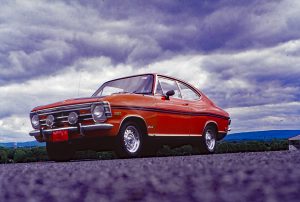

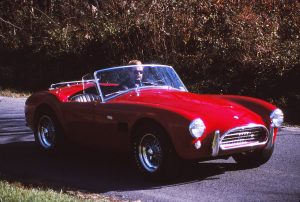
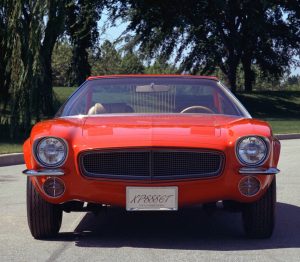
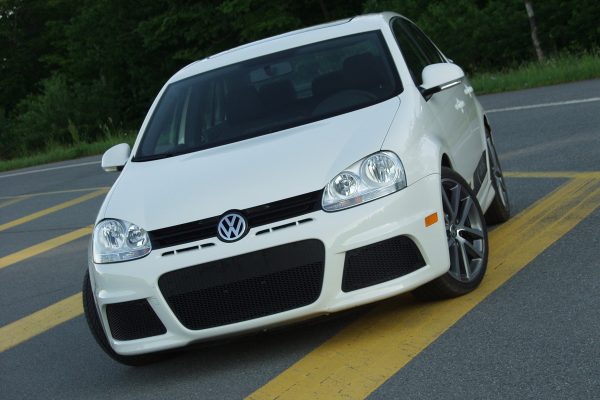
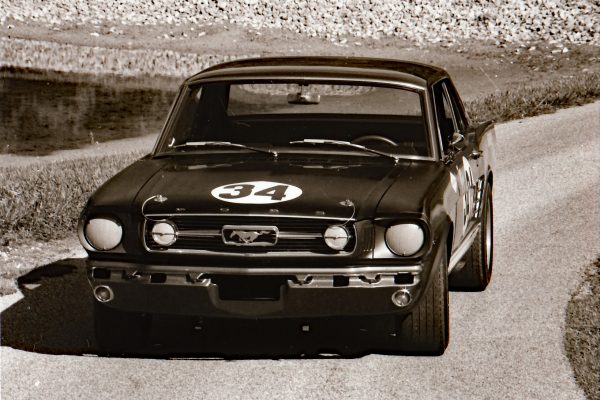
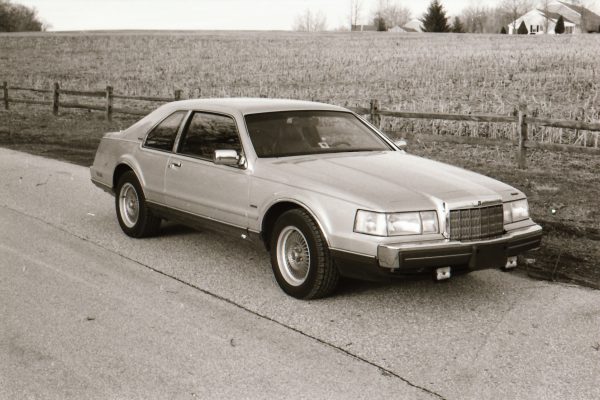
What Do You Think?
You must be logged in to post a comment.